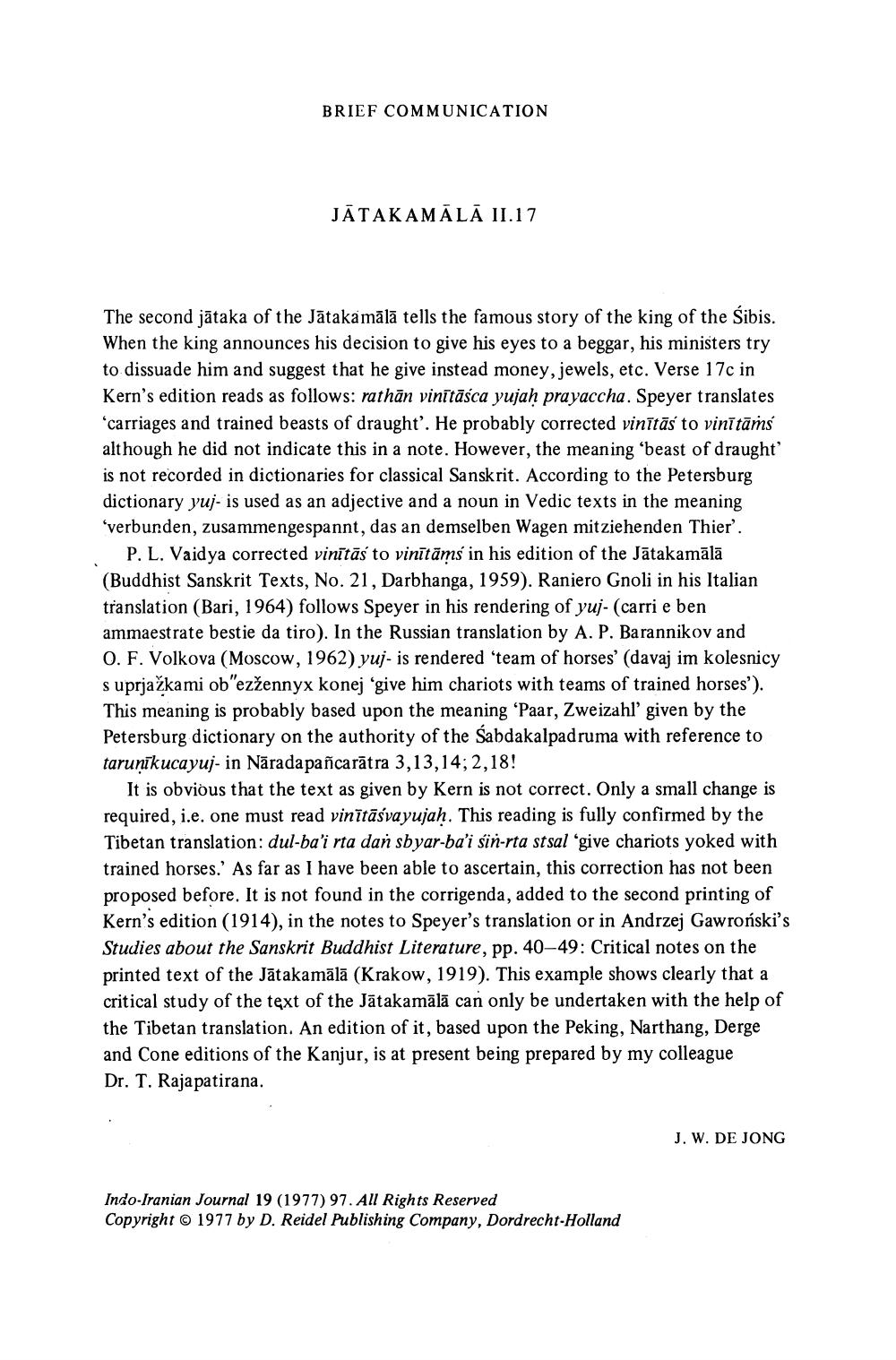Book Title: Jatakamala II 17 Author(s): J W De Jong Publisher: J W De Jong View full book textPage 1
________________ BRIEF COMMUNICATION JATAKAMALA II.17 The second jataka of the Jataka mala tells the famous story of the king of the Sibis. When the king announces his decision to give his eyes to a beggar, his ministers try to dissuade him and suggest that he give instead money, jewels, etc. Verse 17c in Kern's edition reads as follows: rathan vinitasca yujah prayaccha. Speyer translates 'carriages and trained beasts of draught. He probably corrected vinitasi to vinitams although he did not indicate this in a note. However, the meaning 'beast of draught' is not recorded in dictionaries for classical Sanskrit. According to the Petersburg dictionary yuj- is used as an adjective and a noun in Vedic texts in the meaning 'verbunden, zusammengespannt, das an demselben Wagen mitziehenden Thier'. P. L. Vaidya corrected vinitas to vinitams in his edition of the Jatakamala (Buddhist Sanskrit Texts, No. 21, Darbhanga, 1959). Raniero Gnoli in his Italian translation (Bari, 1964) follows Speyer in his rendering of yuj- (carri e ben ammaestrate bestie da tiro). In the Russian translation by A. P. Barannikov and 0. F. Volkova (Moscow, 1962) yuj- is rendered 'team of horses' (davaj im kolesnicy s uprjazkami ob"ezzennyx konej 'give him chariots with teams of trained horses'). This meaning is probably based upon the meaning 'Paar, Zweizahl given by the Petersburg dictionary on the authority of the Sabdakalpadruma with reference to tarunikucayuj- in Narada pancaratra 3,13,14; 2,18! It is obvious that the text as given by Kern is not correct. Only a small change is required, i.e. one must read vinitasvayujah. This reading is fully confirmed by the Tibetan translation: dul-ba'i rta dan sbyar-ba'i sin-rta stsal 'give chariots yoked with trained horses. As far as I have been able to ascertain, this correction has not been proposed before. It is not found in the corrigenda, added to the second printing of Kern's edition (1914), in the notes to Speyer's translation or in Andrzej Gawronski's Studies about the Sanskrit Buddhist Literature, pp. 40-49: Critical notes on the printed text of the Jatakamala (Krakow, 1919). This example shows clearly that a critical study of the text of the Jatakamala can only be undertaken with the help of the Tibetan translation. An edition of it, based upon the Peking, Narthang, Derge and Cone editions of the Kanjur, is at present being prepared by my colleague Dr. T. Rajapatirana. J. W. DE JONG Indo-Iranian Journal 19 (1977) 97. All Rights Reserved Copyright (c) 1977 by D. Reidel Publishing Company, Dordrecht-HollandPage Navigation
1
